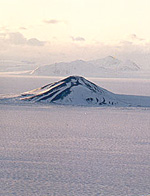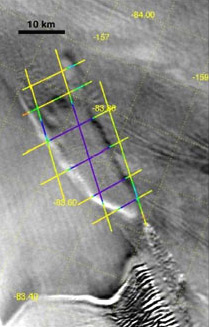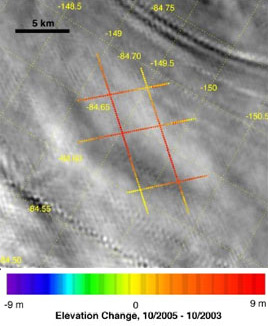This web of waterways acts as a vehicle for water to move and change its influence on the ice movement.
Moving back and forth through the system's "pipes" from one lake to another, the water stimulates the speed of the ice stream's flow a few feet per day, contributing to conditions that cause the ice sheet to either grow or decay.
Movement in this system can influence sea level and ice melt worldwide. "There's an urgency to learning more about ice sheets when you note that sea level rises and falls in direct response to changes in that ice," Fricker said.
In recent years, scientists have discovered more than 145 subglacial lakes, a smaller number of which composes this "plumbing system" in the Antarctic.
The research team observed water discharging from these under-ice lakes into the ocean in coastal areas.
Their research has delivered new insight into how much and how frequently these waterways "leak" water and how many connect to the ocean.
The study included observations of a subglacial lake the size of Lake Ontario buried under an active area of west Antarctica that feeds into the Ross Ice Shelf.
The research team unveiled a multi-dimensional view of changes in the elevation of the icy surface above the lake and surrounding areas during a three-year period. Those changes suggest the lake drained and that its water relocated elsewhere.
|














 UN delivers warning on the catastrophe of climate change
UN delivers warning on the catastrophe of climate change

 View larger image
View larger image

